Discover Natural Beauty on the Brimham Rocks Walk in Nidderdale
Begin your Brimham Rocks walk from the heart of Pateley Bridge. Head east along the Nidderdale Way, tracing the top of Ripley Bank towards Blazefield. Continue east on the Nidderdale Way, and then veer south past Cragg Hall and Kiln House. Your path intersects a minor road leading to Smelthouses.
In Smelthouses, venture north-east through beautiful woodland, following the meandering course of Fell Beck. The trail then shifts eastward, ascending towards the impressive Brimham Rocks. Dedicate some time to exploring this natural wonder.
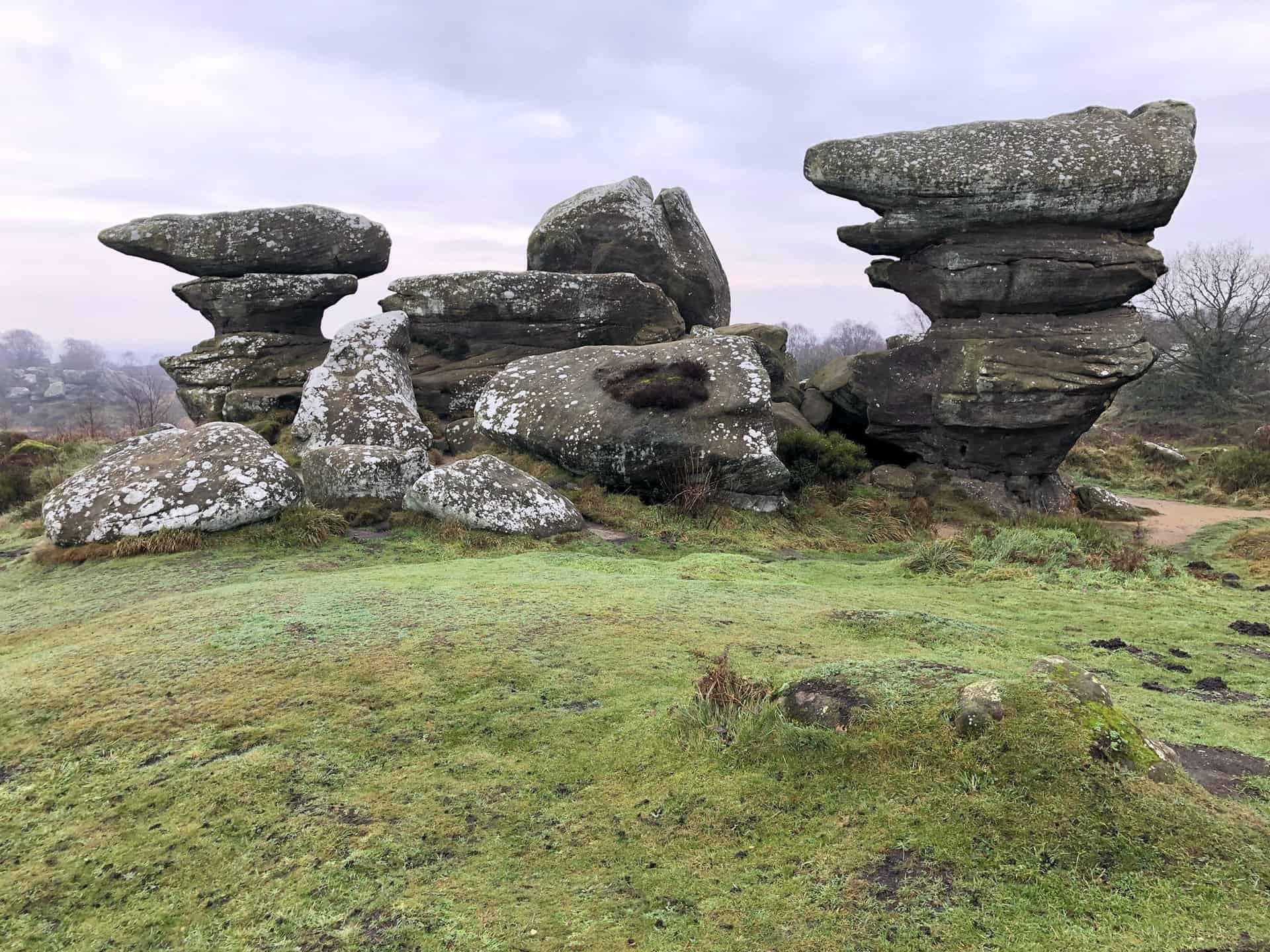
Next, proceed south using a combination of tracks and roads to reach Summerbridge. From here, embark on a north-western route. The trail closely follows the River Nidd on its southern bank, leading you to Glasshouses.
Upon reaching Glasshouses, cross the river. Now, follow the River Nidd from its northern bank. This section forms part of the Six Dales Trail, guiding you back to your starting point in Pateley Bridge. This scenic route covers approximately 11 miles, showcasing the beauty of Nidderdale.
Brimham Rocks Walk: Maps and Tools
Visit either the OS Maps website or the Outdooractive website to view this walking route in greater detail. Both platforms offer a range of features, including the ability to print the route, download it to your device, and export the route as a GPX file. You can also watch a 3D fly-over and share the route on social media.
Brimham Rocks Walk: Distance, Duration, Statistics
Distance: 11¼ miles
Distance: 18 kilometres
Duration: 5¼ hours
Ascent: 1619 feet
Ascent: 493 metres
Type: Circular walk
About Brimham Rocks
Brimham Rocks are balancing rock formations on Brimham Moor in North Yorkshire. The rocks stand at a height of nearly 30 feet in an area owned by the National Trust which is part of the Nidderdale Area of Outstanding Natural Beauty.
There are many variations of rock formations, caused by Millstone Grit being eroded by water, glaciation and wind, some of which have formed amazing shapes. Many formations have been named, though imagination is required and the correct viewing angle is helpful. Examples include the Sphinx, the Watchdog, the Camel, the Turtle and the Dancing Bear.
The children’s television programme ‘Roger and the Rottentrolls’ was filmed at Brimham Rocks and the site also features in the Bee Gees’ video ‘You Win Again’. A scene of series six of ‘Knightmare’, another children’s programme and adventure game show, saw Brimham Rocks used as a location although only used once. Visit https://en.wikipedia.org/wiki/Brimham_Rocks for more information.
Recommended Ordnance Survey Map
The best map to use on this walk is the Ordnance Survey map of Nidderdale, reference OS Explorer 298, scale 1:25,000. It clearly displays footpaths, rights of way, open access land and vegetation on the ground, making it ideal for walking, running and hiking. The map can be purchased from Amazon in either a standard, paper version or a weatherproof, laminated version, as shown below.
Weatherproof Version
Ordnance Survey map of Nidderdale, reference OS Explorer 298, scale 1:25,000
Brimham Rocks Walk: My Photos
Pateley Bridge town centre at the beginning of the Brimham Rocks walk.
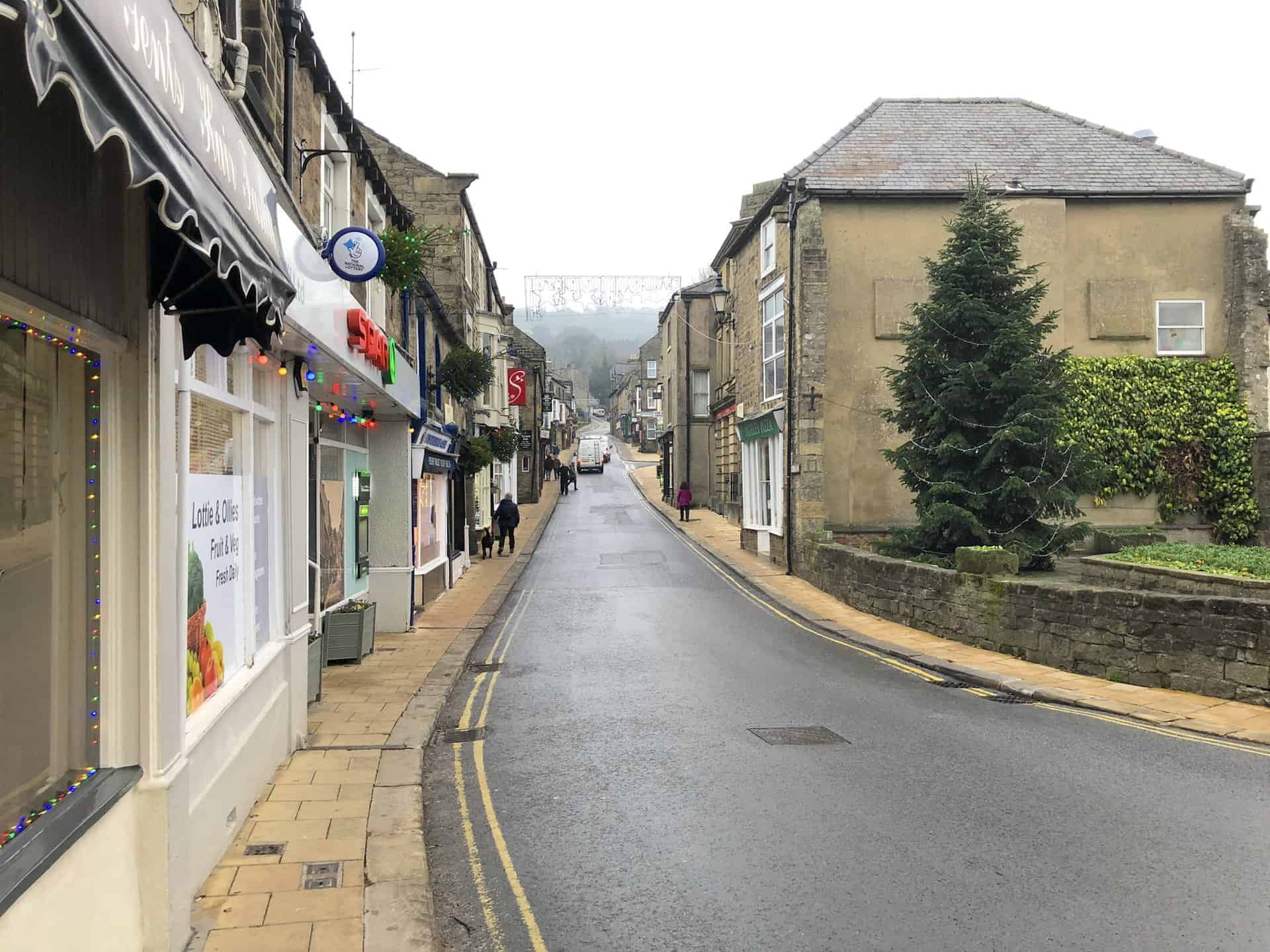
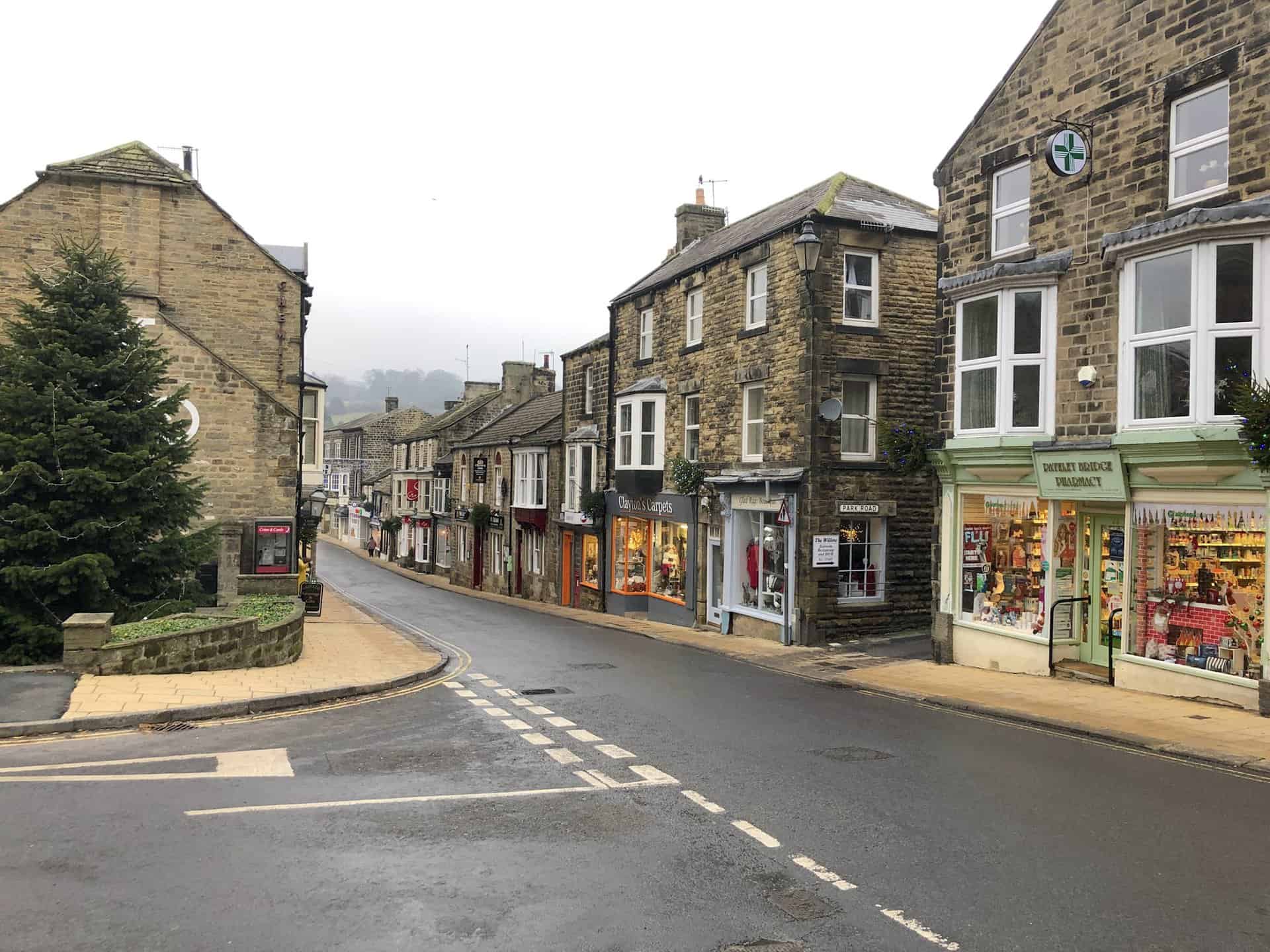
A misty morning in Nidderdale.
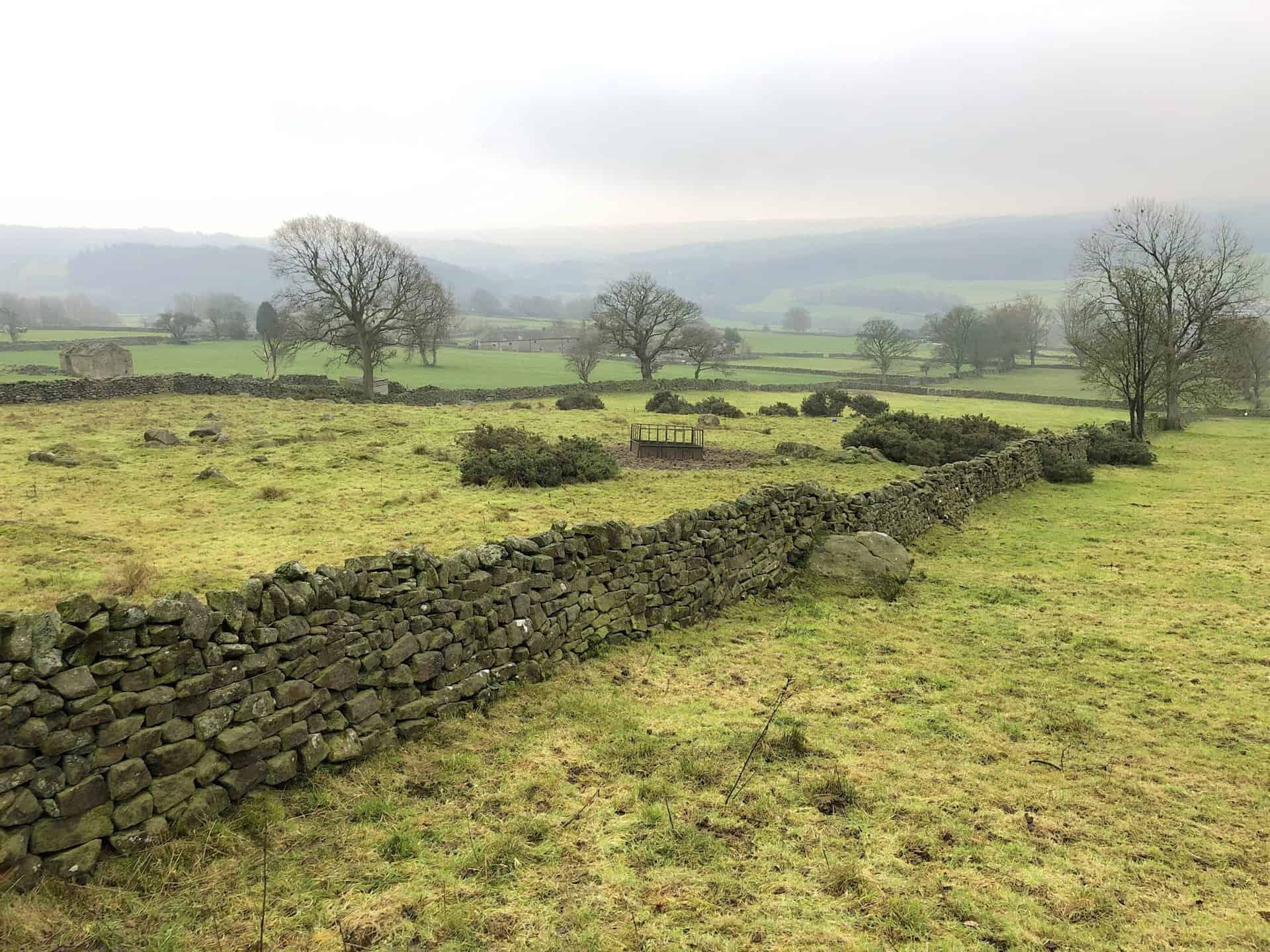
Nidderdale Llamas, Kiln Farm, Wilsill, Pateley Bridge. Visit https://www.nidderdalellamas.org for more information.

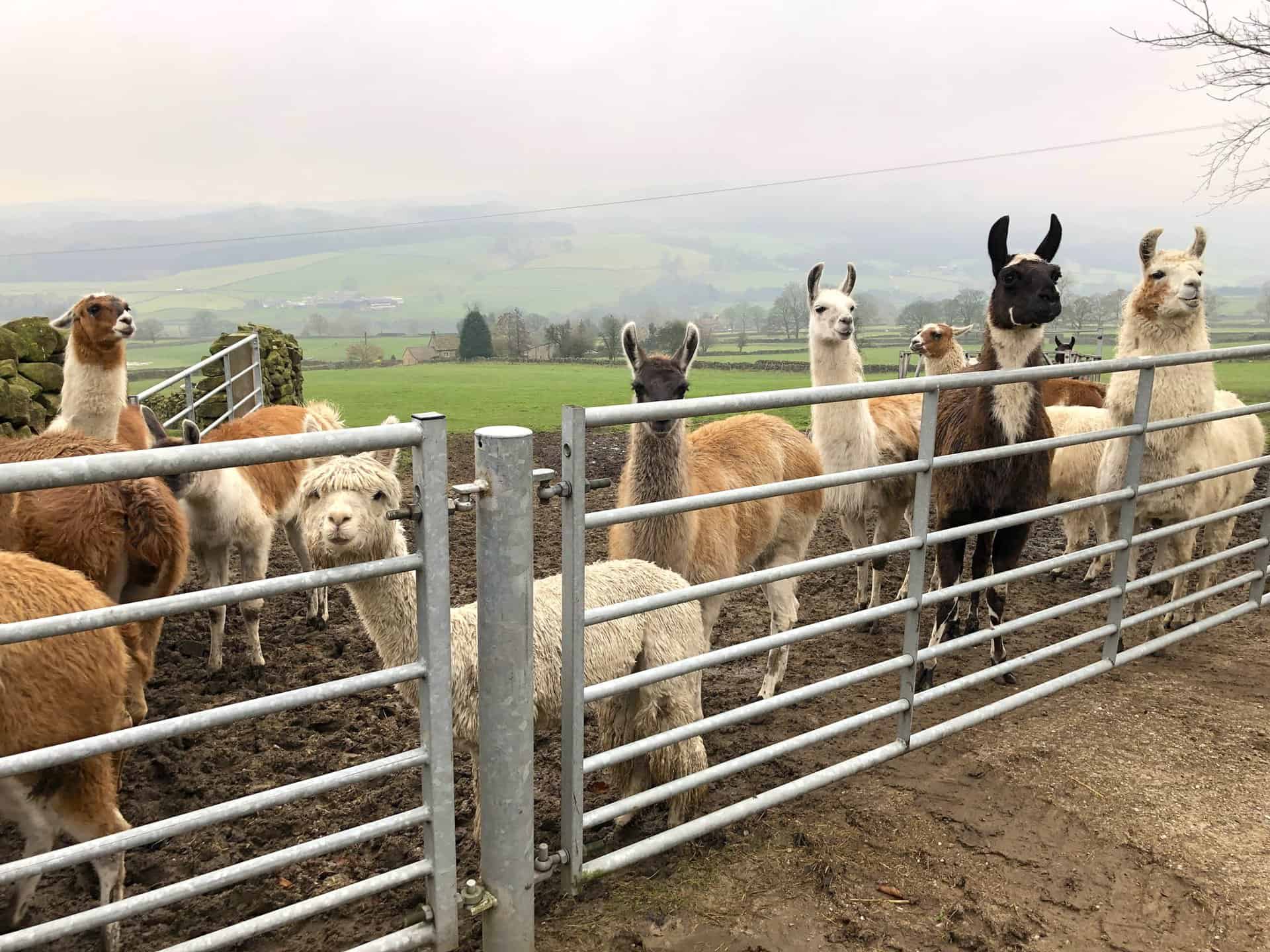
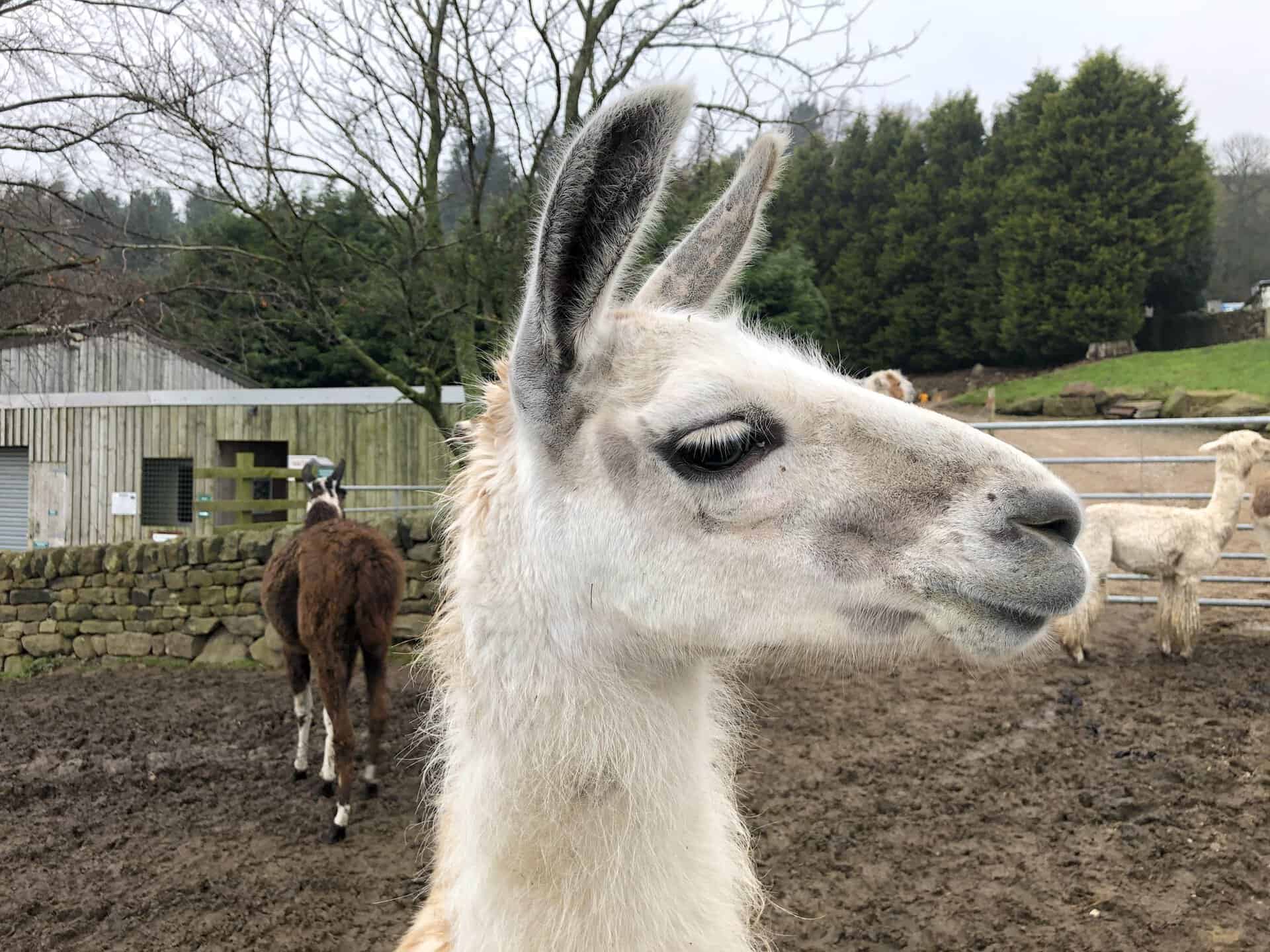
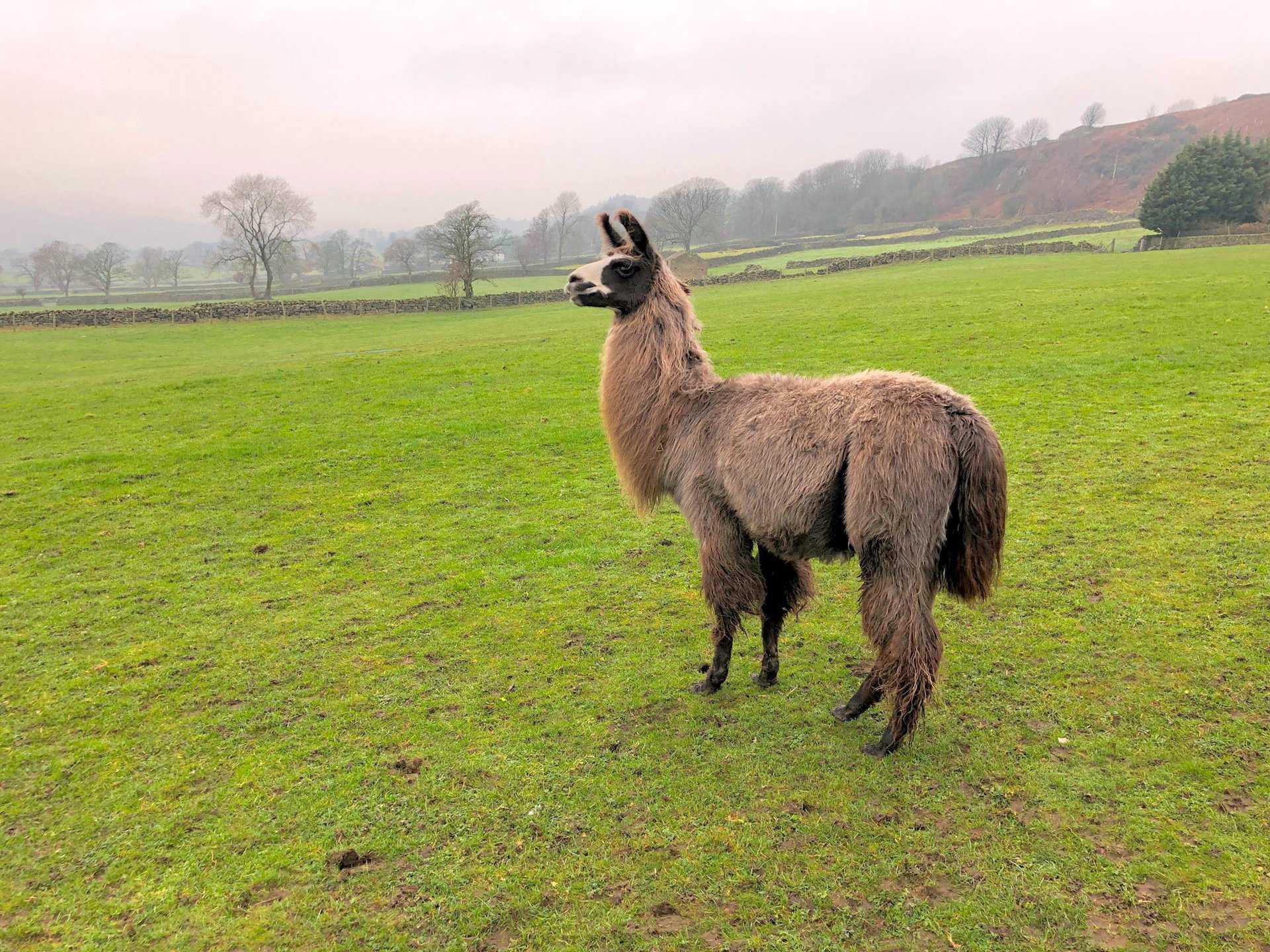
Fell Beck in Smelthouses, about one-quarter of the way round the Brimham Rocks walk.
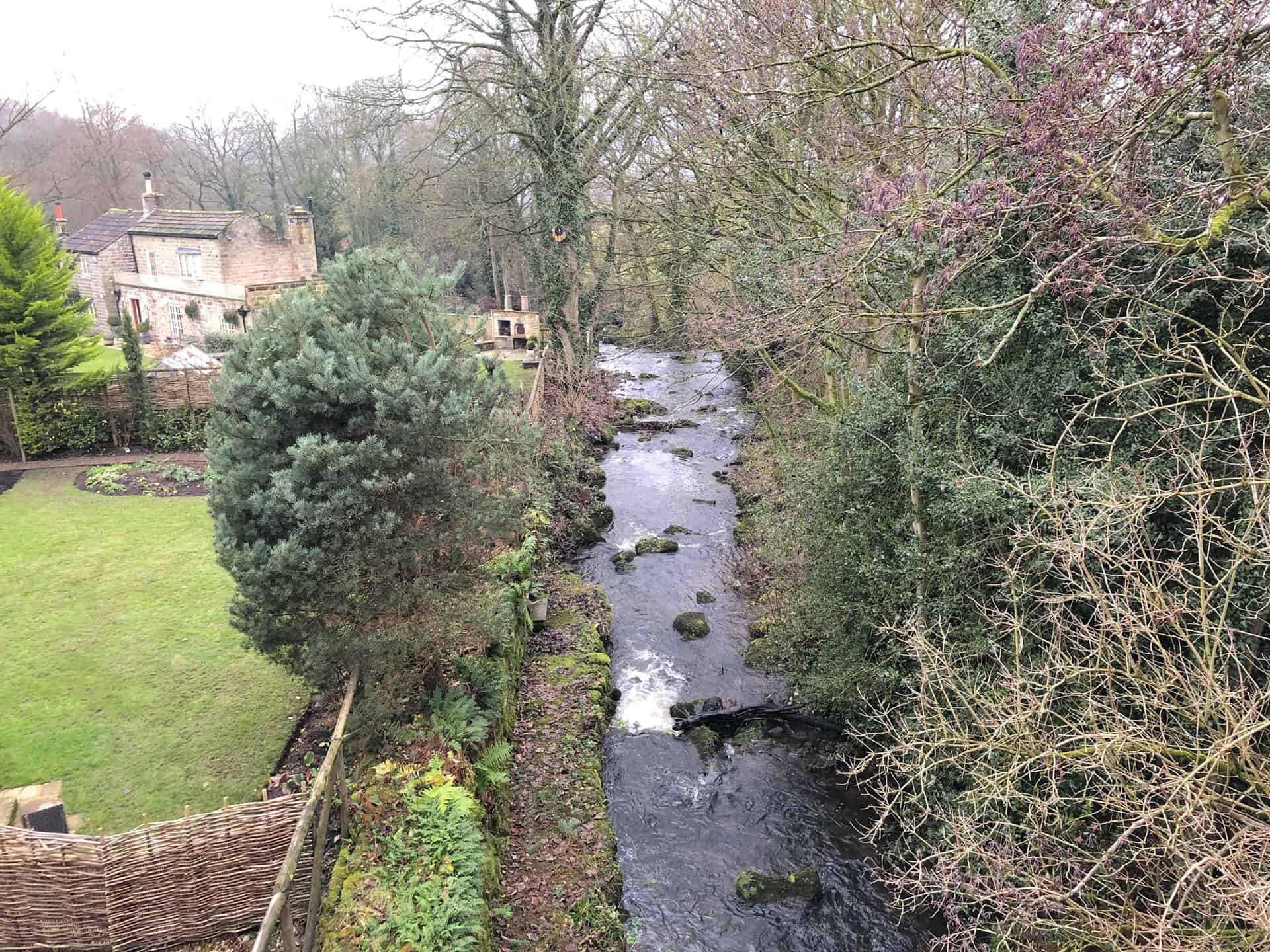
House and gardens by the side of Fell Beck in Smelthouses.
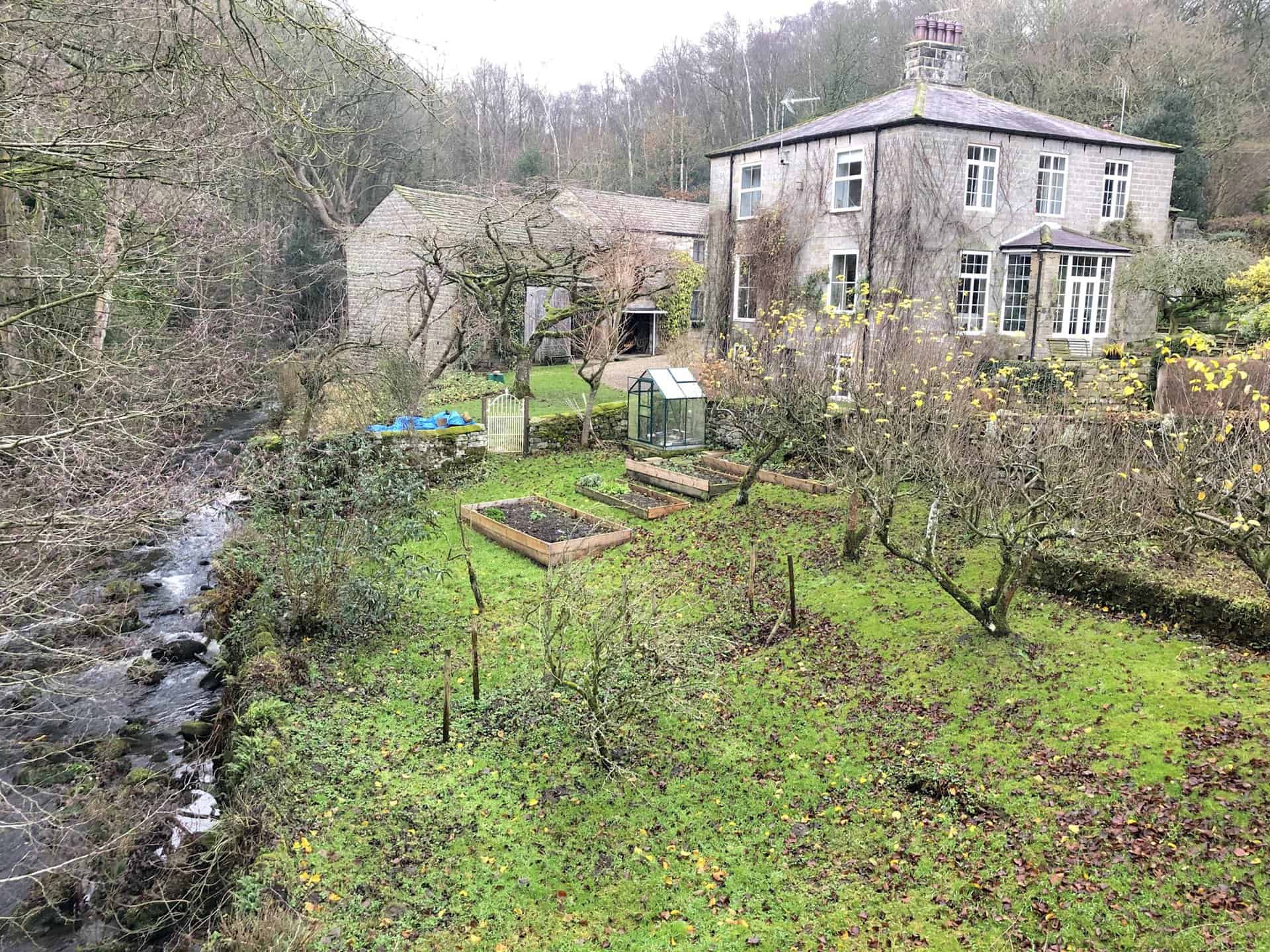
Fell Beck flowing through woodland north of Smelthouses.
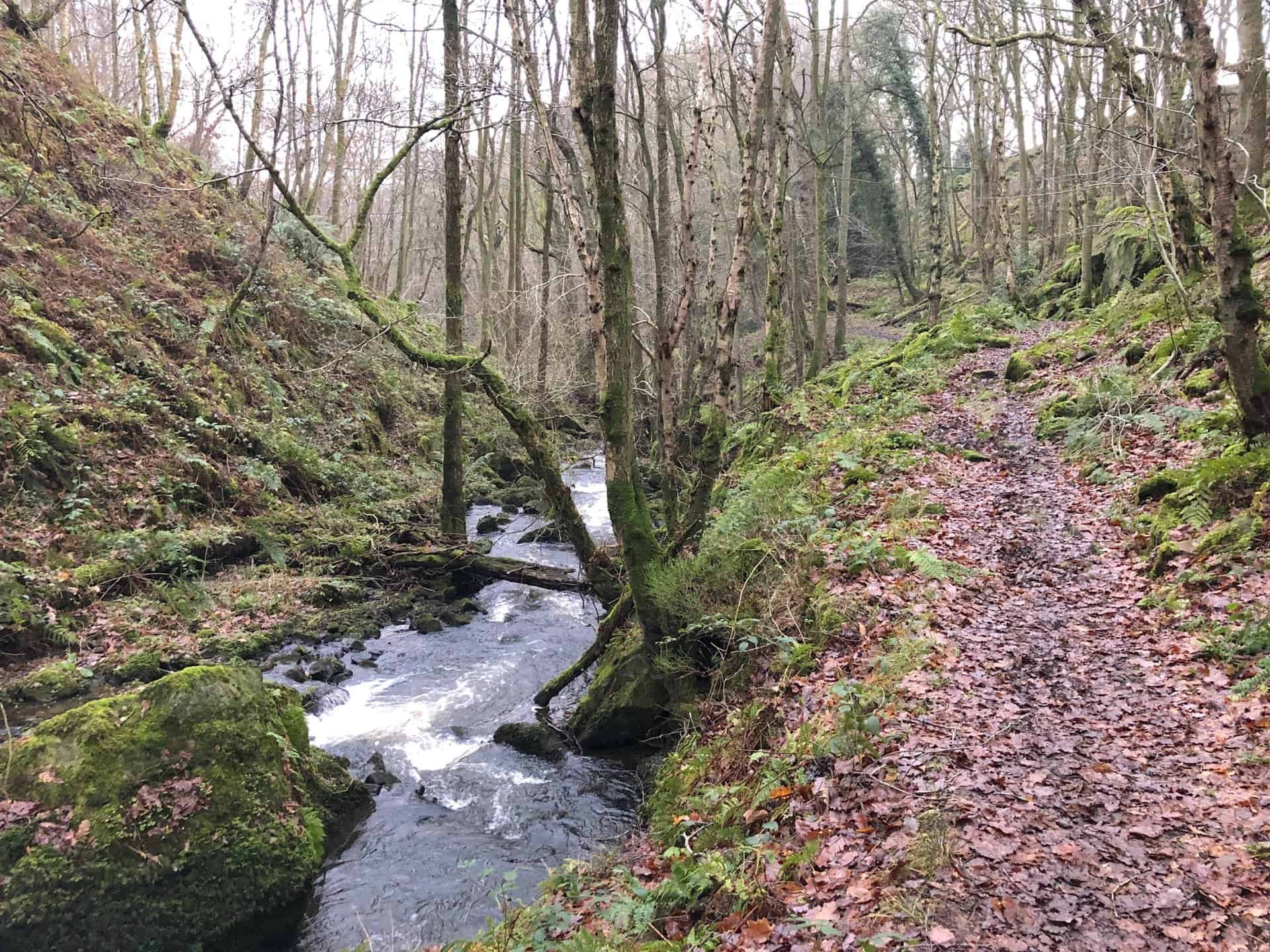
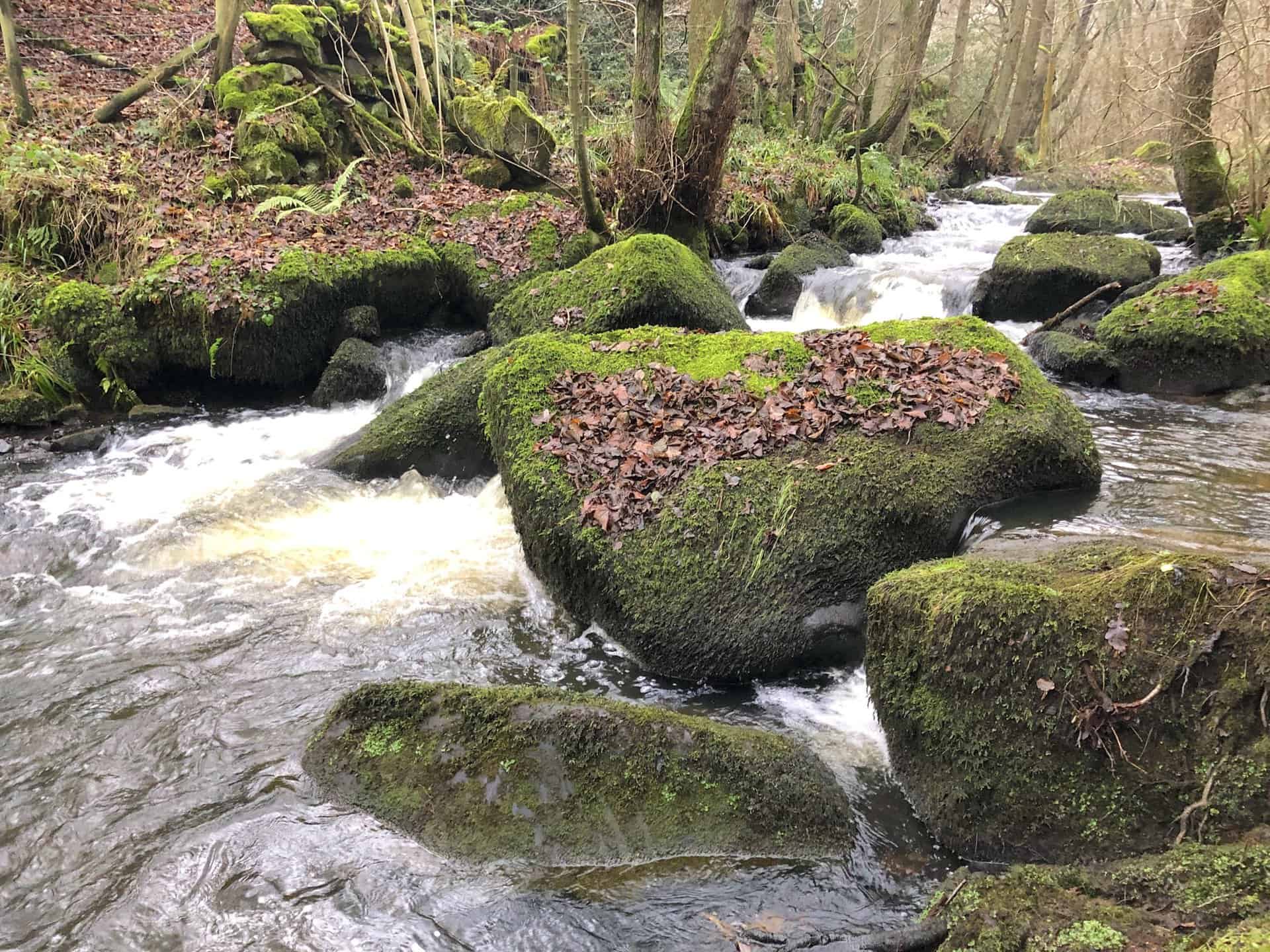
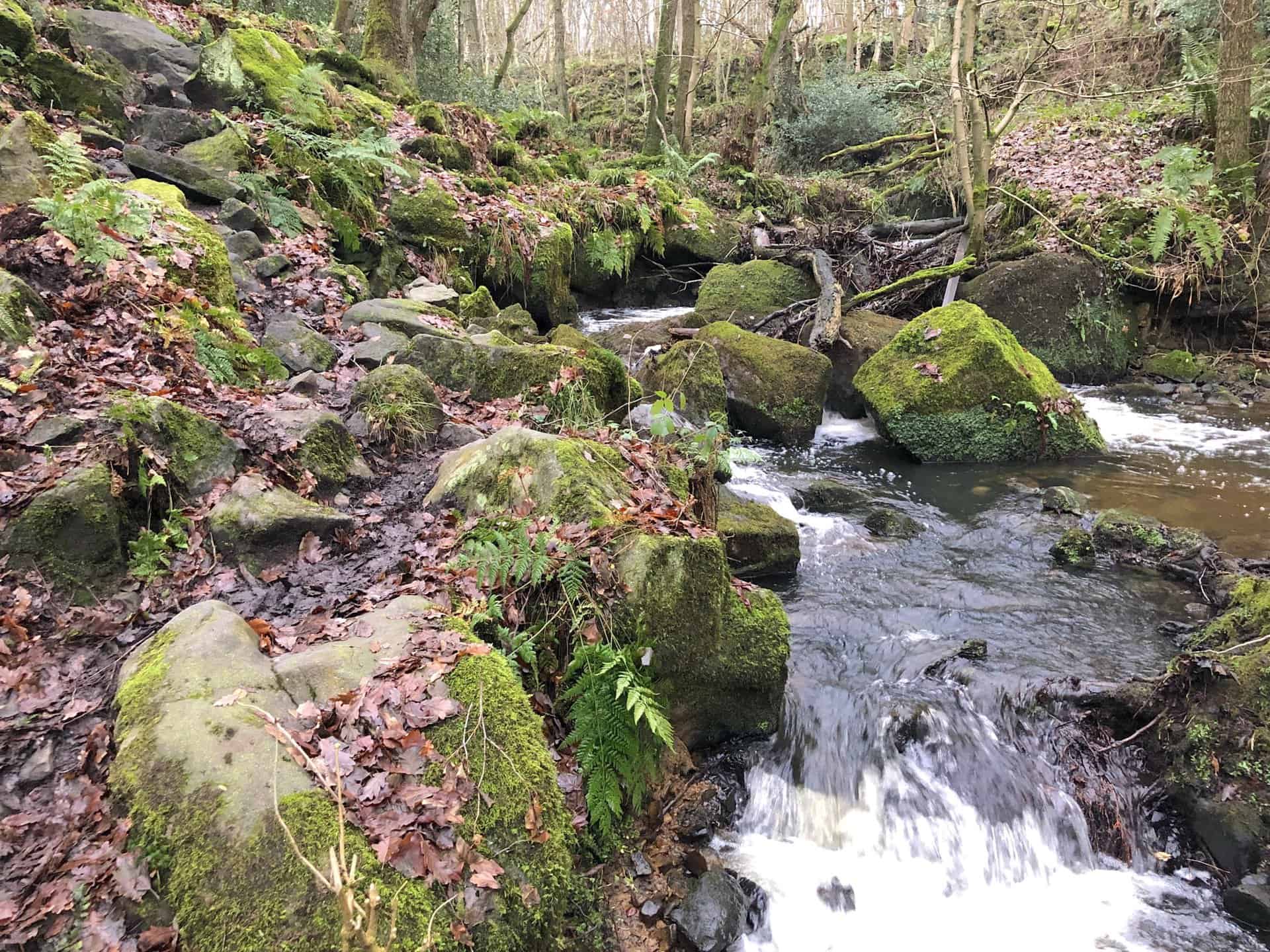
Brimham Rocks in North Yorkshire, notable for their balancing rock formations, standing at nearly 30 feet and situated within the Nidderdale Area of Outstanding Natural Beauty. This is about halfway round this particular Brimham Rocks walk.
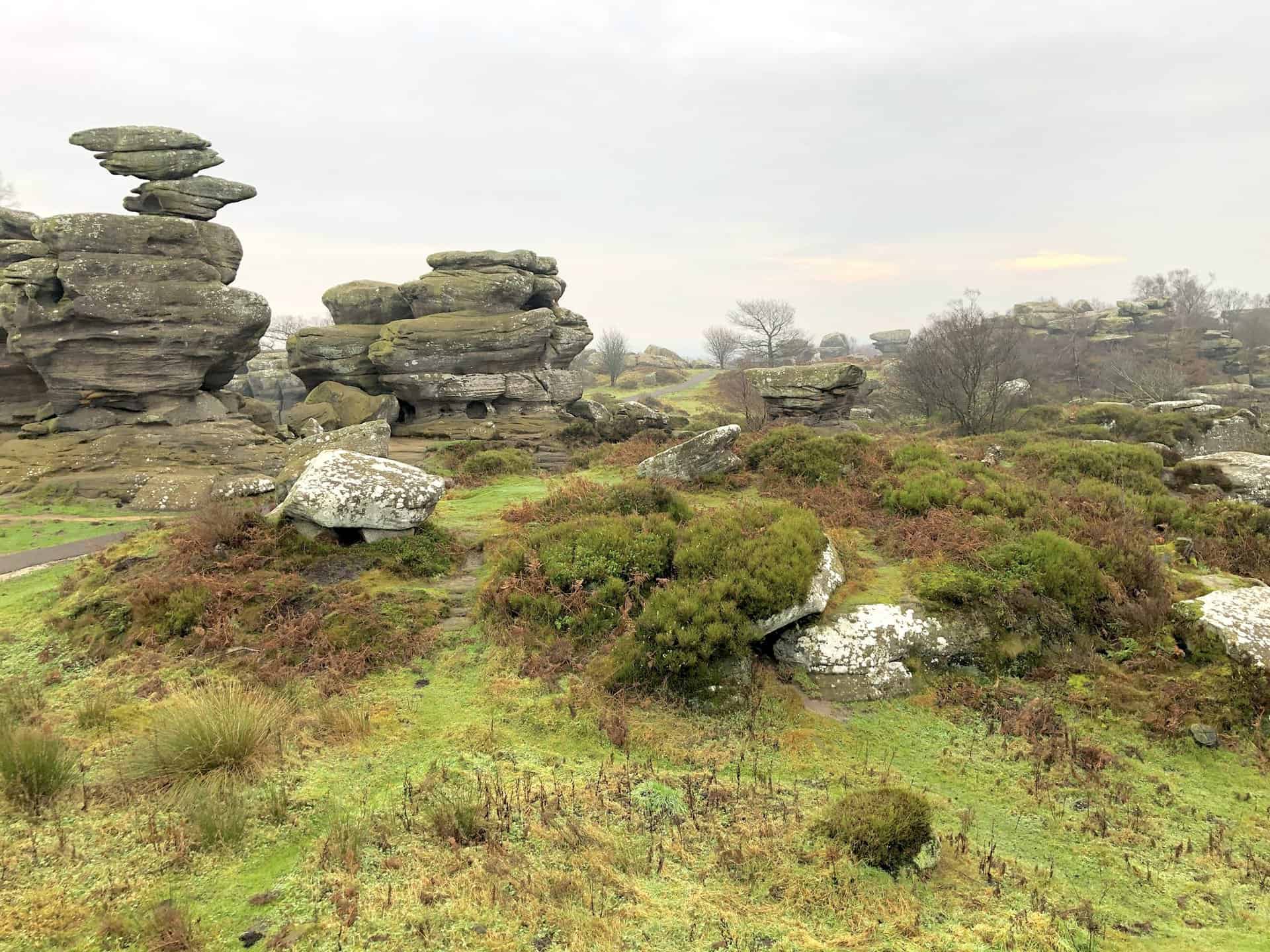
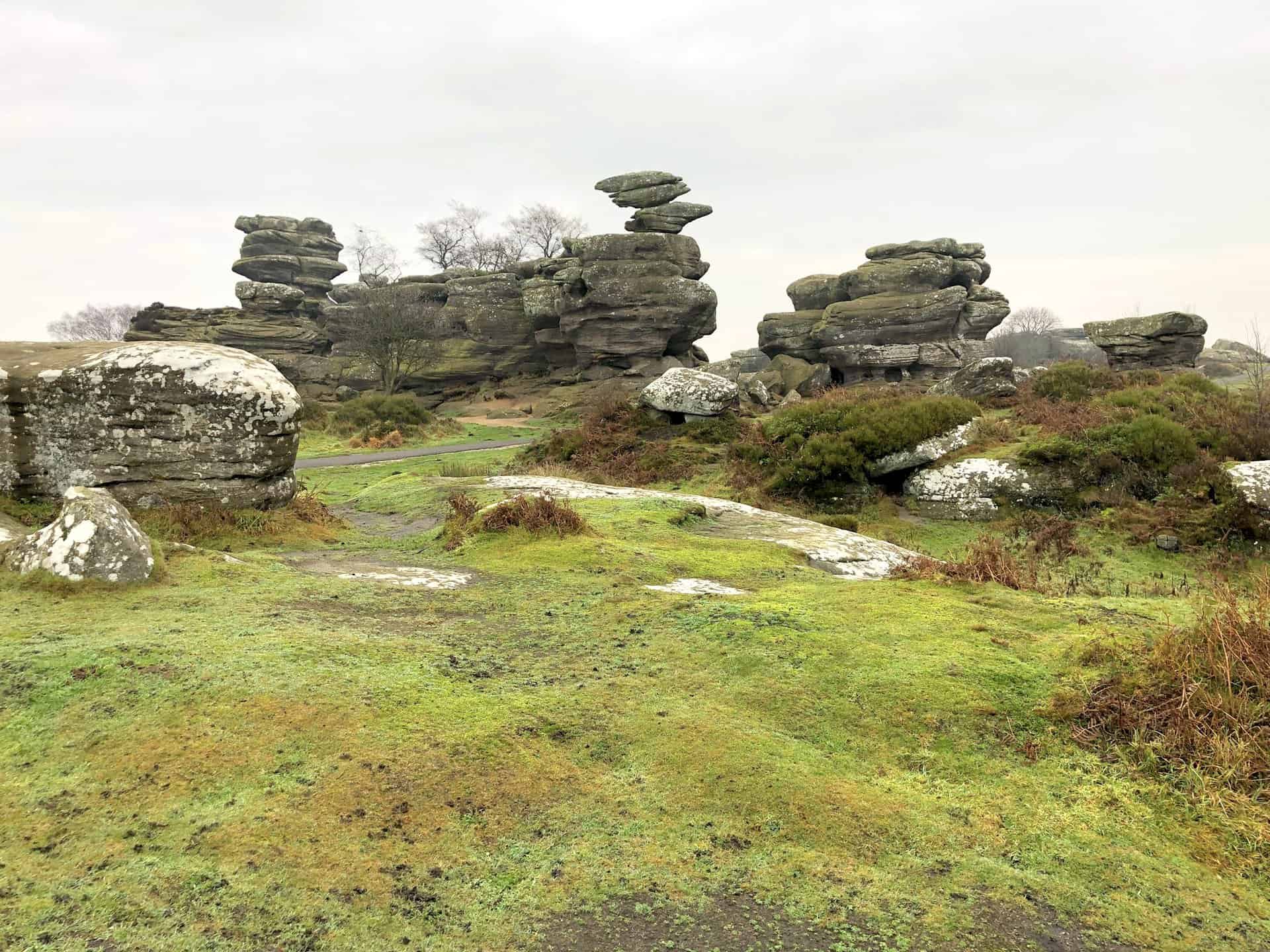
These formations, shaped by natural erosion, include distinct shapes like the Sphinx, the Watchdog, and the Dancing Bear, requiring imagination and perspective to appreciate.
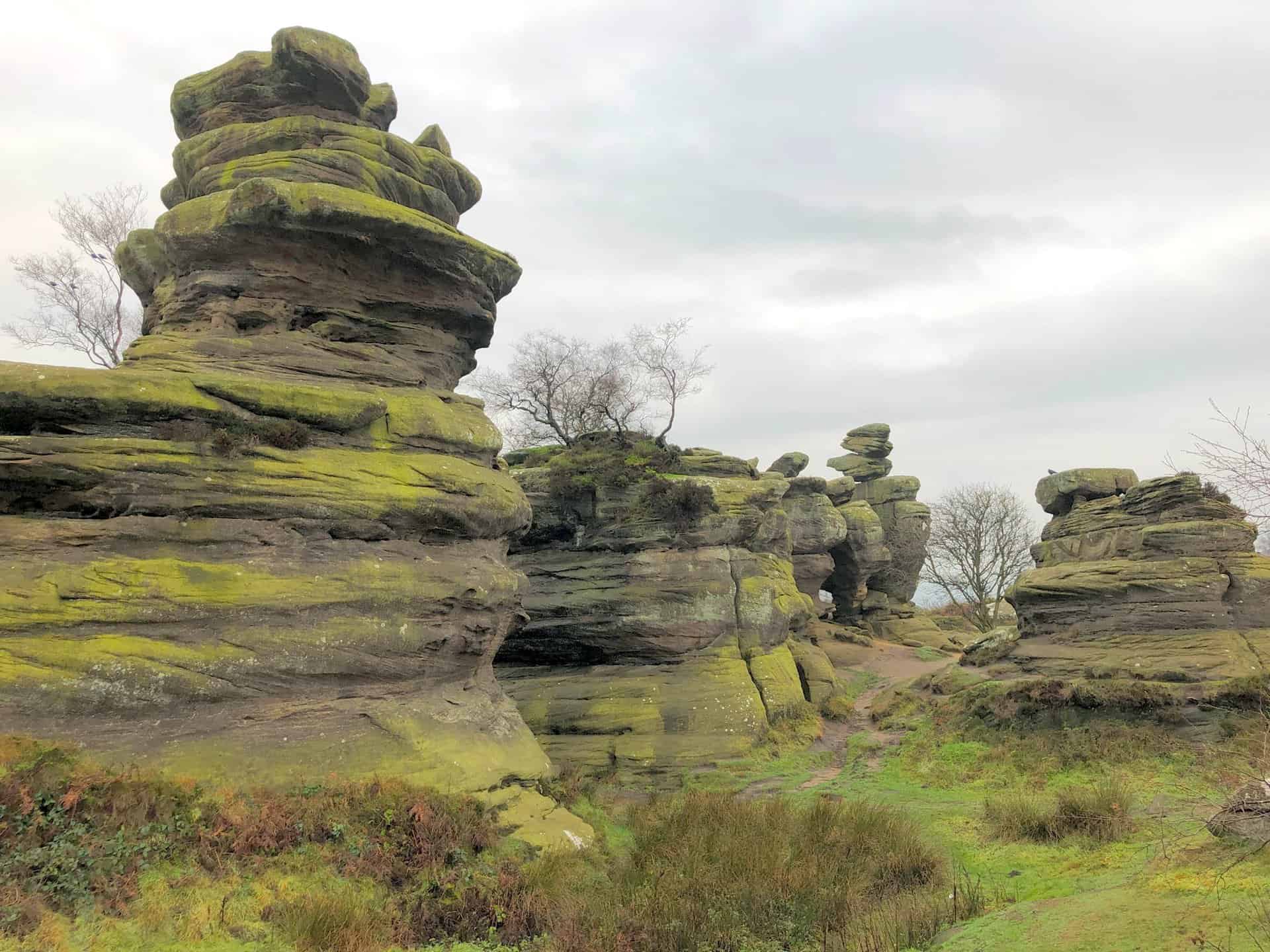
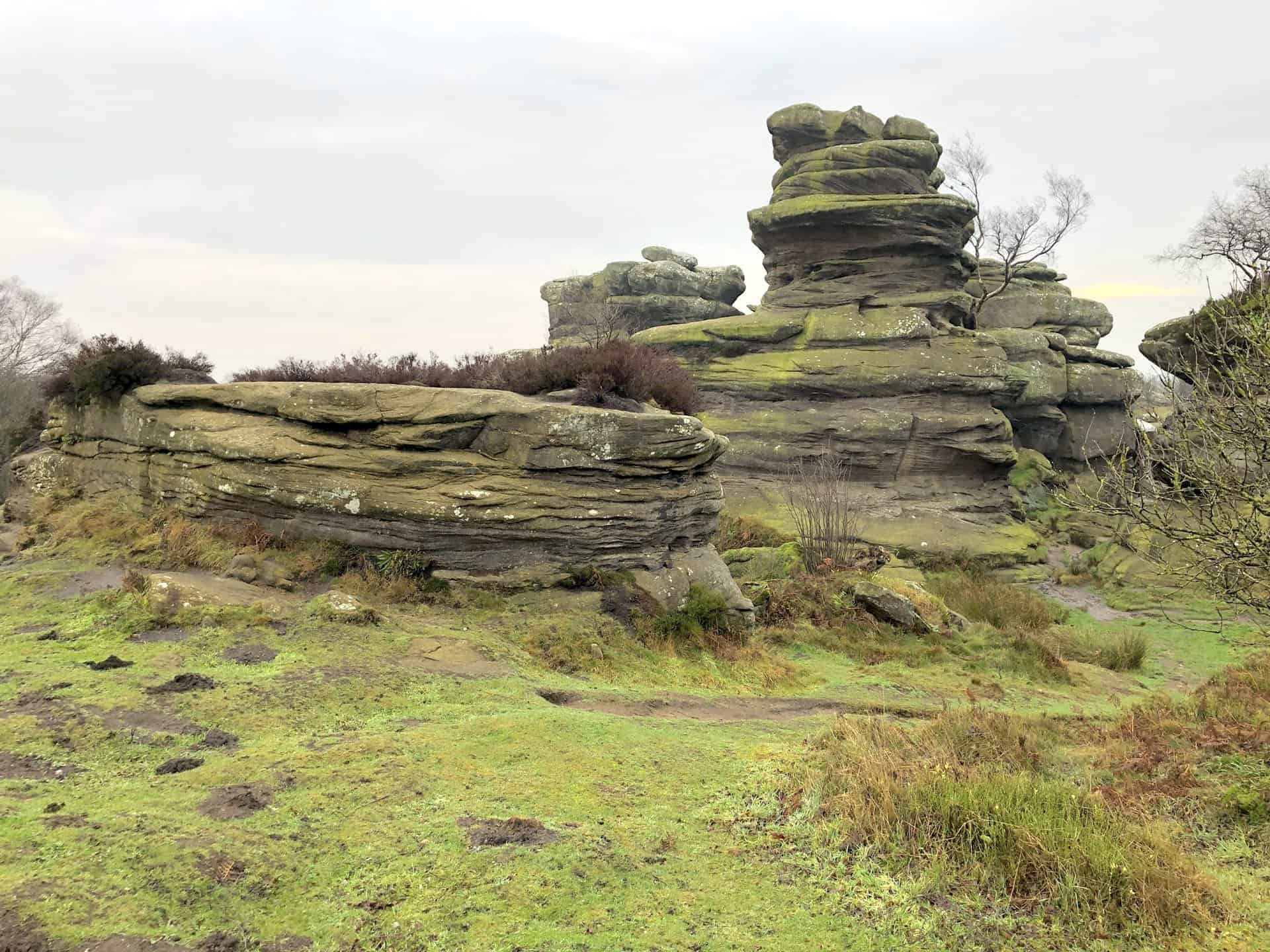
The Brimham Rocks site has been featured in children’s television, notably in ‘Roger and the Rottentrolls’ and a single episode of ‘Knightmare’ series six.

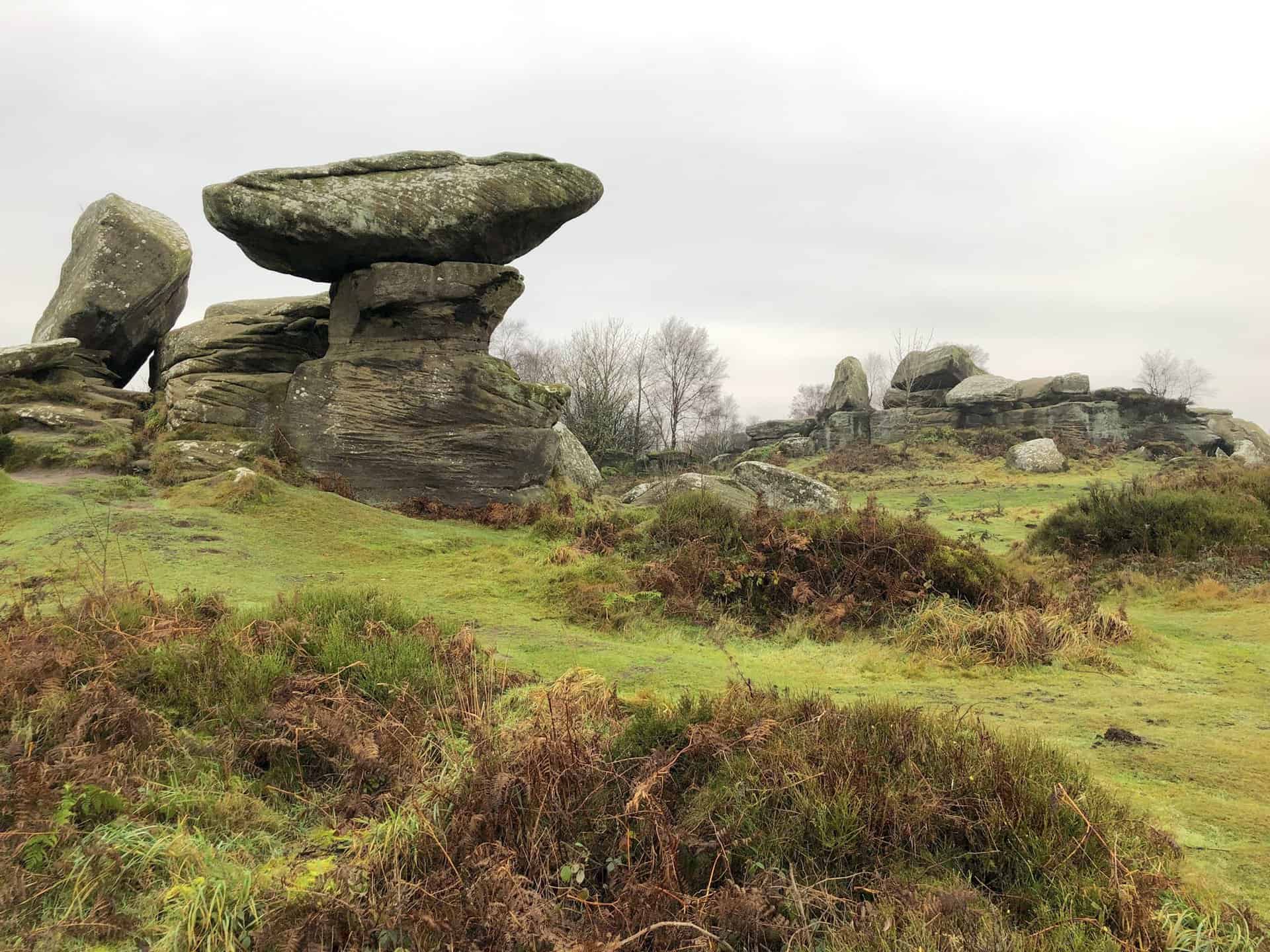
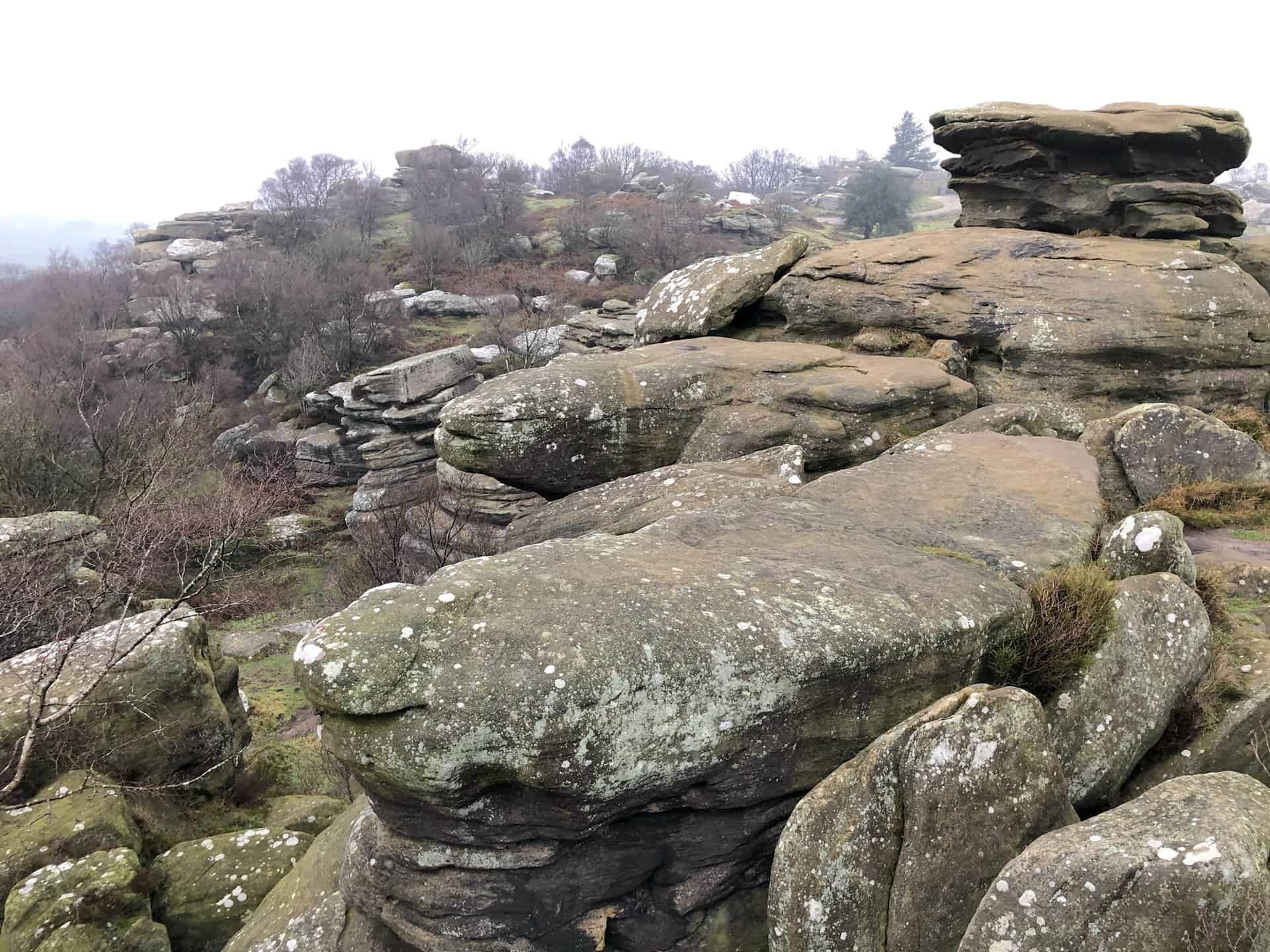
Lake by the side of the River Nidd at Glasshouses.
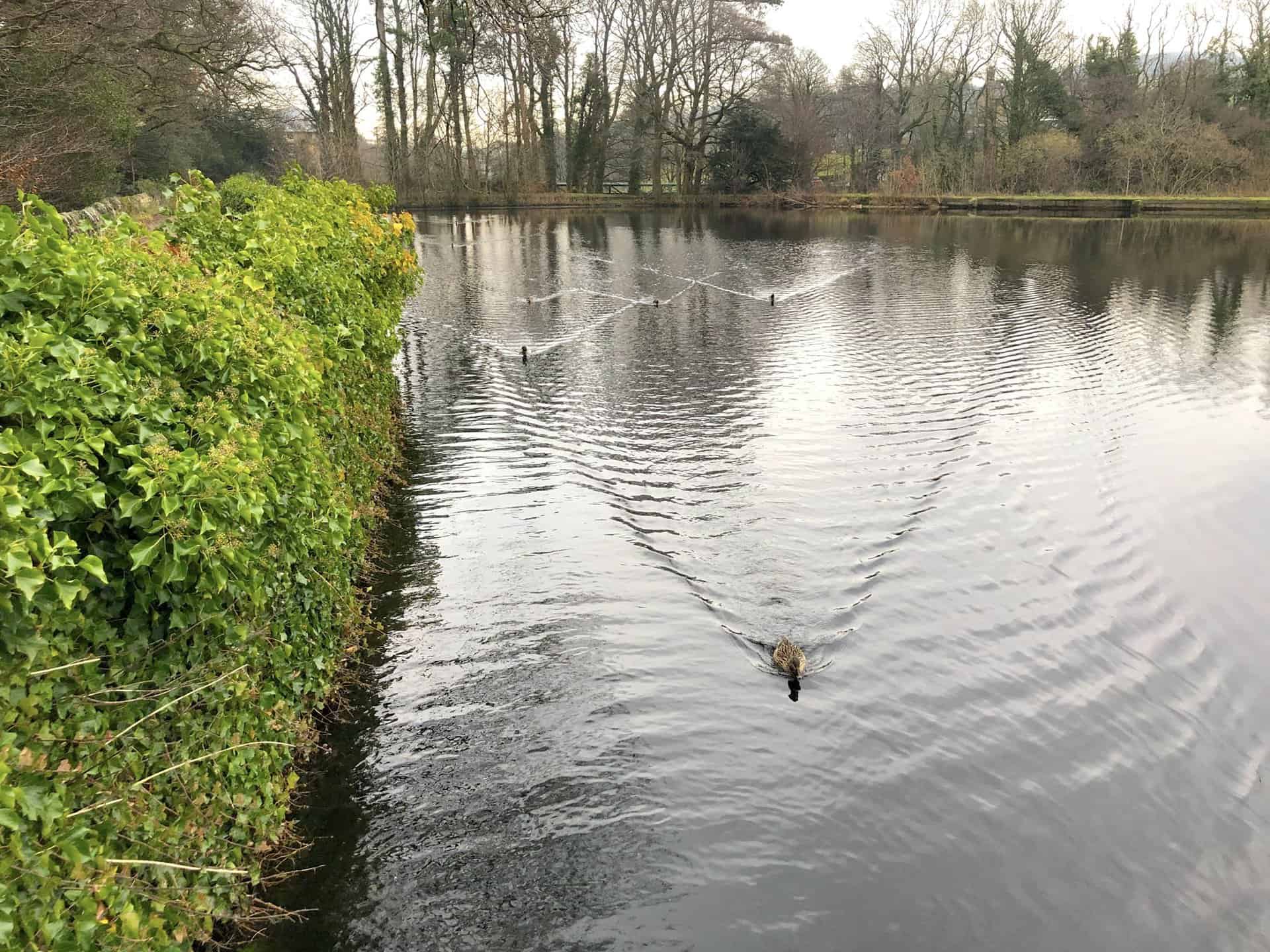
Lake by the side of the River Nidd at Glasshouses. The path is the Six Dales Trail. This picturesque trail was recently enjoyed by my dear Facebook friend, Rainer Böttchers from Germany. He chose to holiday in Nidderdale and the Yorkshire Dales, and penned his memorable experiences of the area in his diary. For a personal account of his journey, one can read his reflections at https://diary.rainerboettchers.de/travelogues/yorkshire-dales-2023.
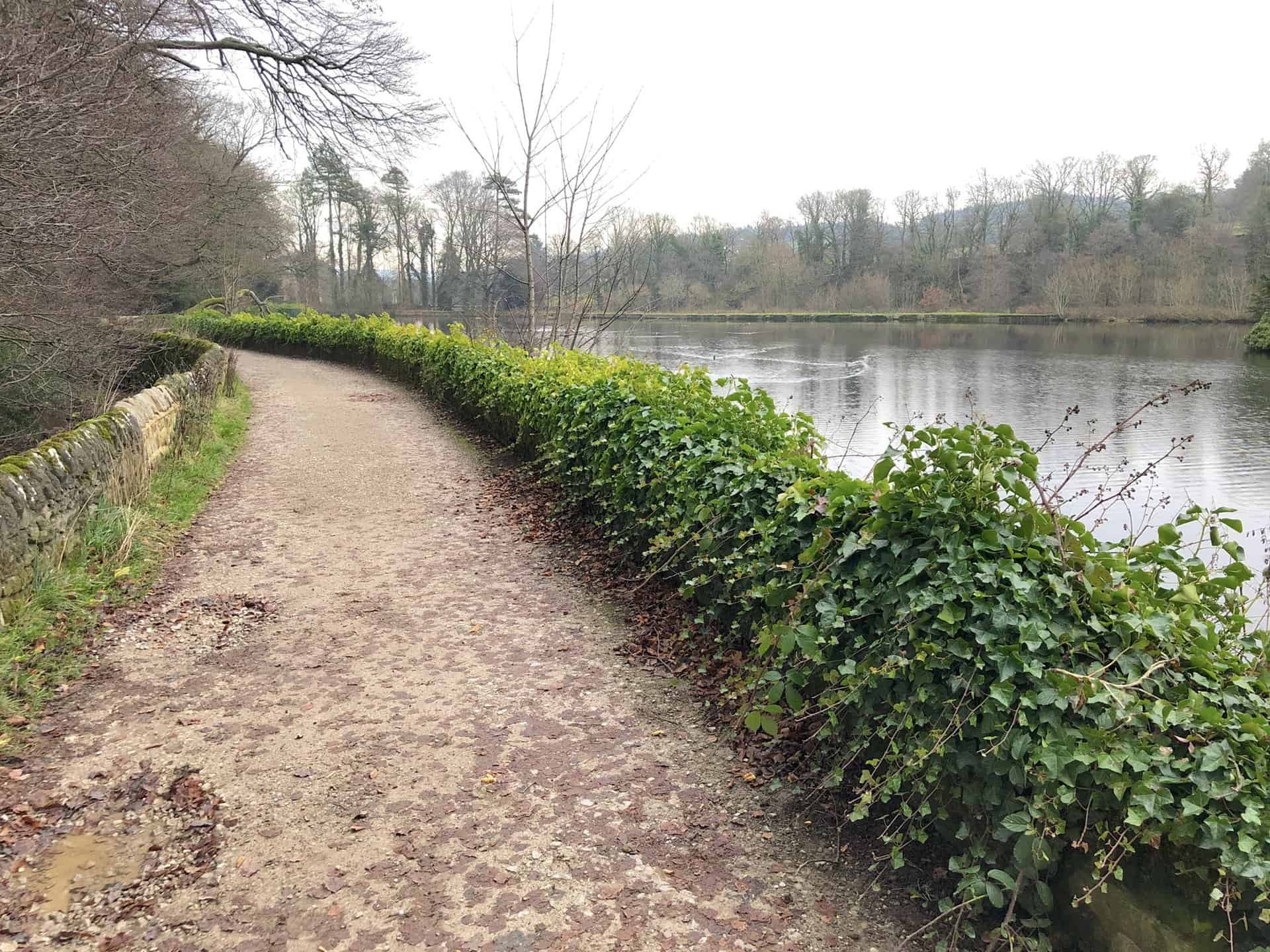
The River Nidd.
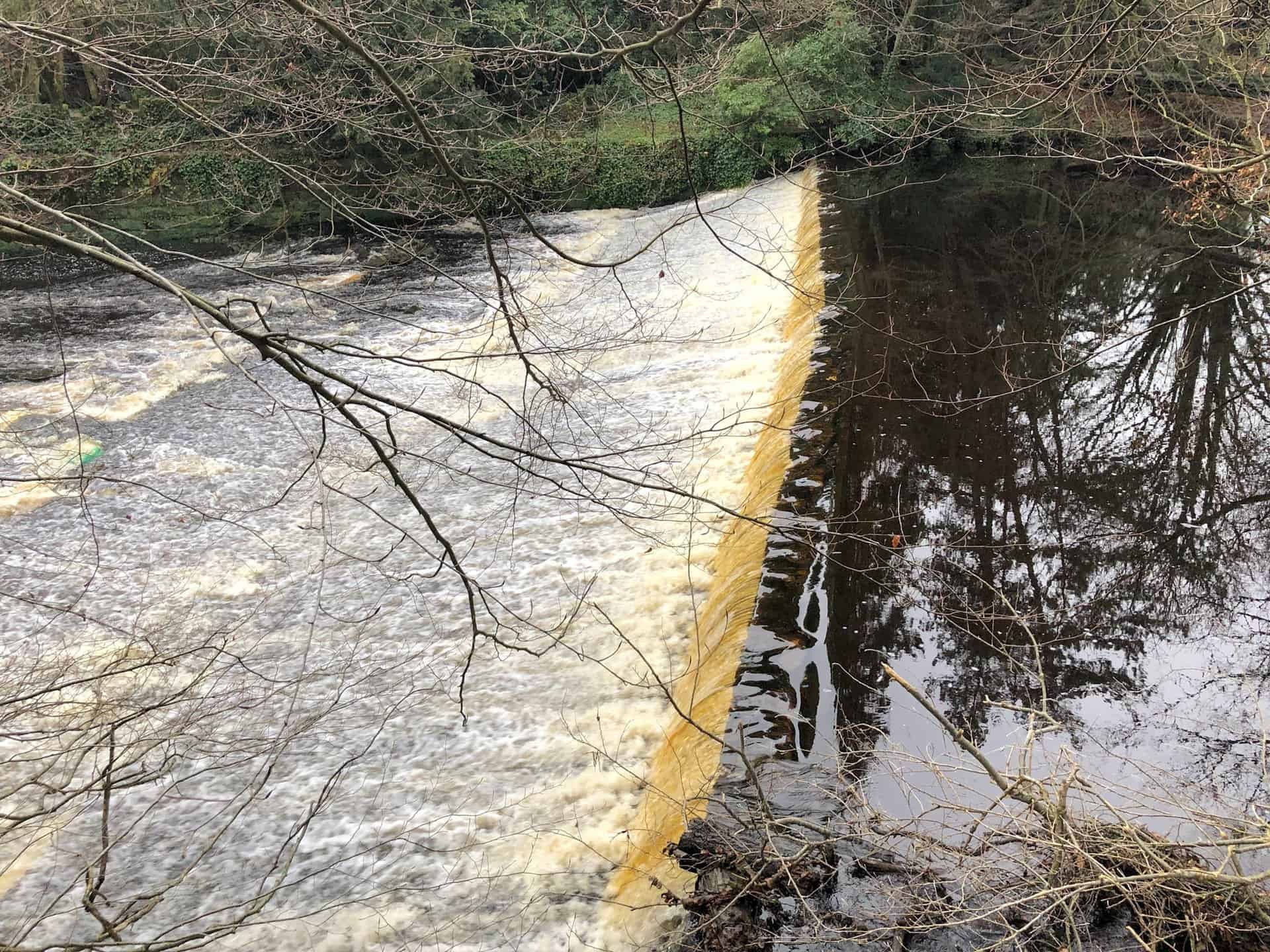
Gated bridge over the River Nidd.
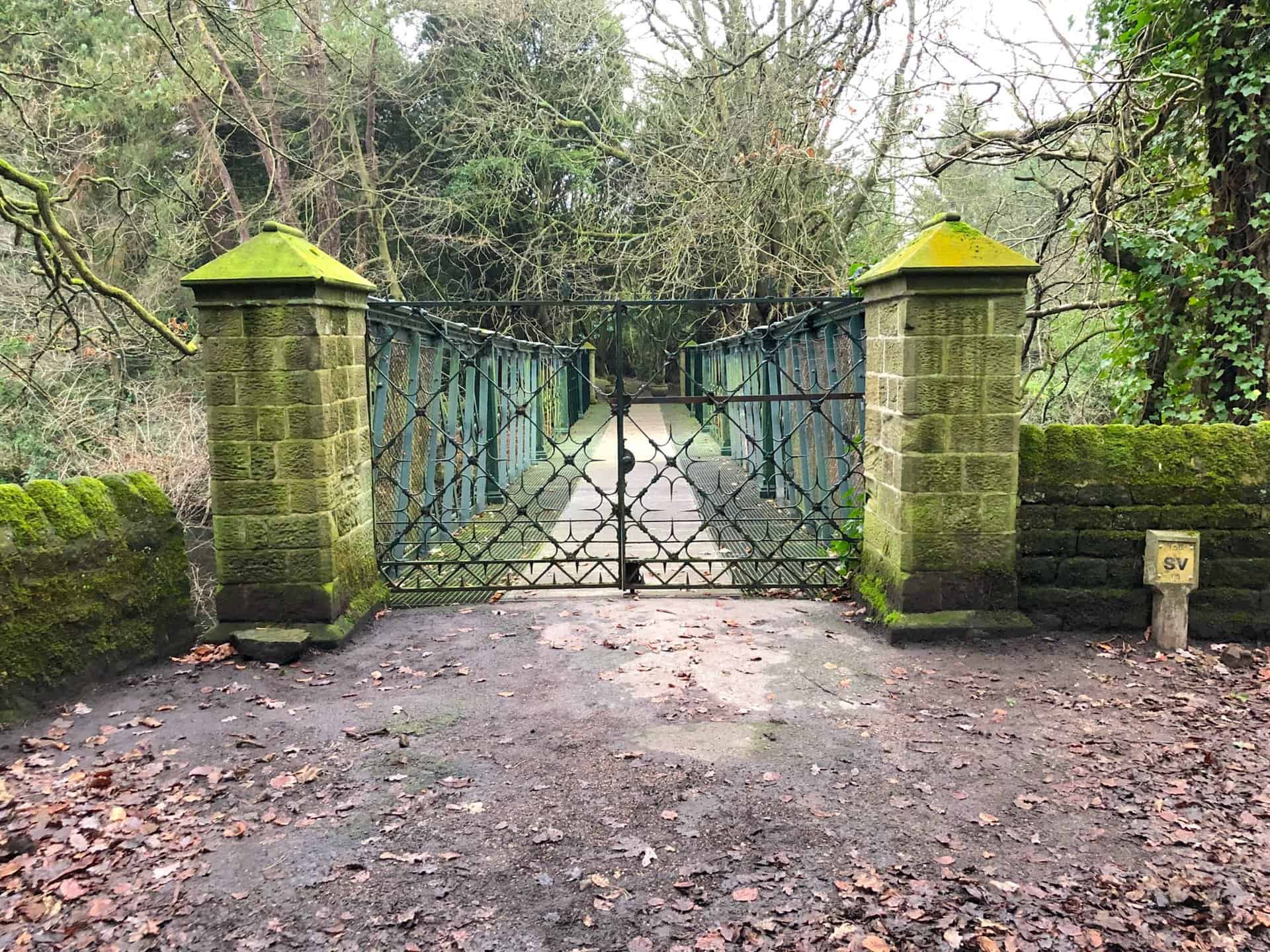
Pillars Past
The sculpture ‘Pillars Past’, commissioned by Sustrans, forms part of the public art trail ‘Passing Places’ which mirrors the long distance Way Of The Roses Cycle Route. This coast-to-coast route between Morecambe and Bridlington passes through some of the most beautiful landscape in the north of England, and ‘Passing Places’ was developed as a public art project with the aim of adding a cultural and historic experience to enrich the travellers’ journey. Pateley Bridge, sited half way along the route, was selected as the location for one of the pieces of public art. You’ll pass the sculpture as you near the end of this Brimham Rocks walk.
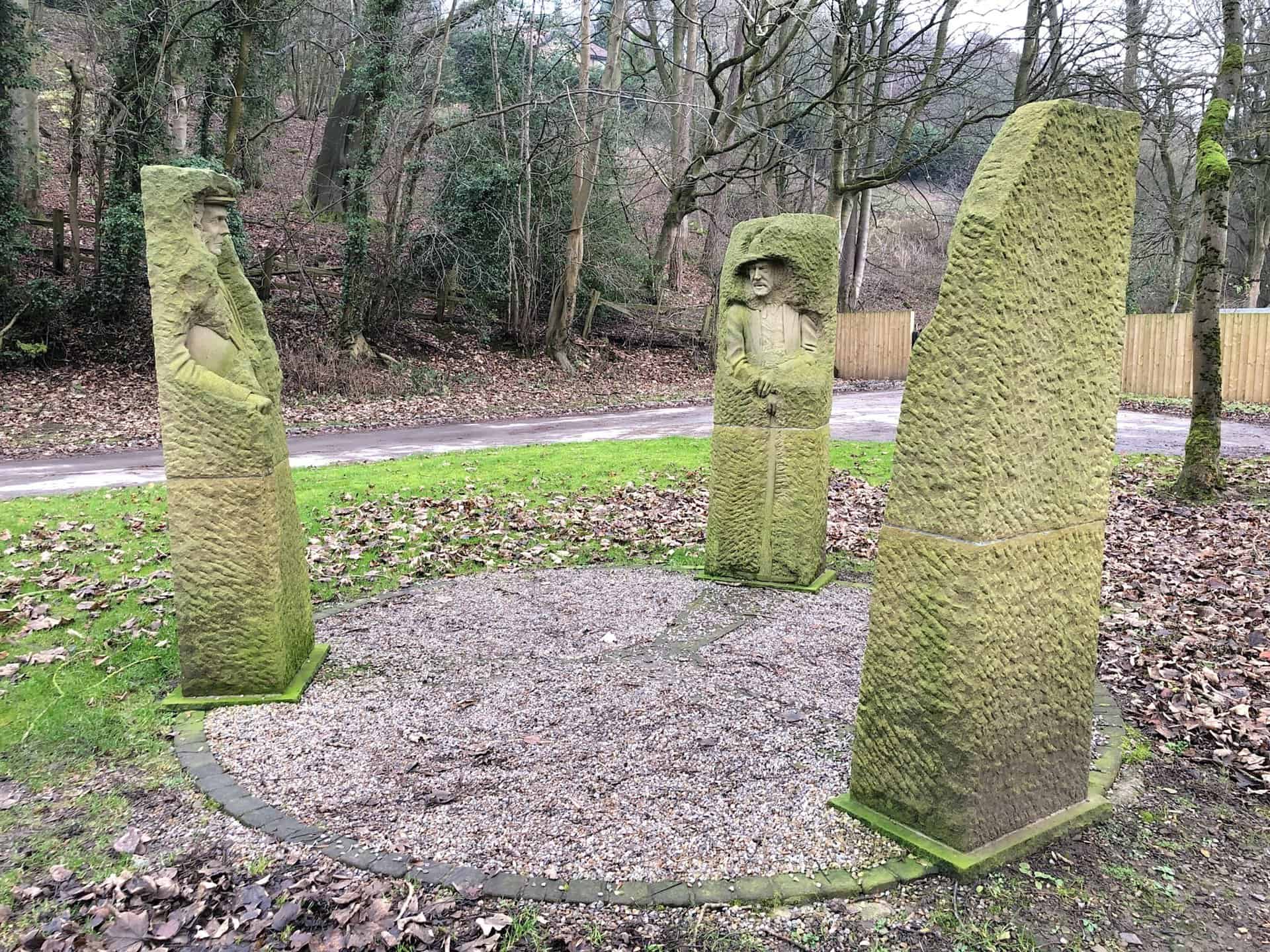
Created by Joseph Hayton, the sculpture ‘Pillars Past’ comprises three figures, in a circular formation, representing the lead mining, agricultural and monastic past that has shaped the landscape in and around Pateley Bridge. Emerging from the monumental blocks of Yorkshire sandstone, the figures engage with both the present, and the viewer who stands in the centre of the circle.
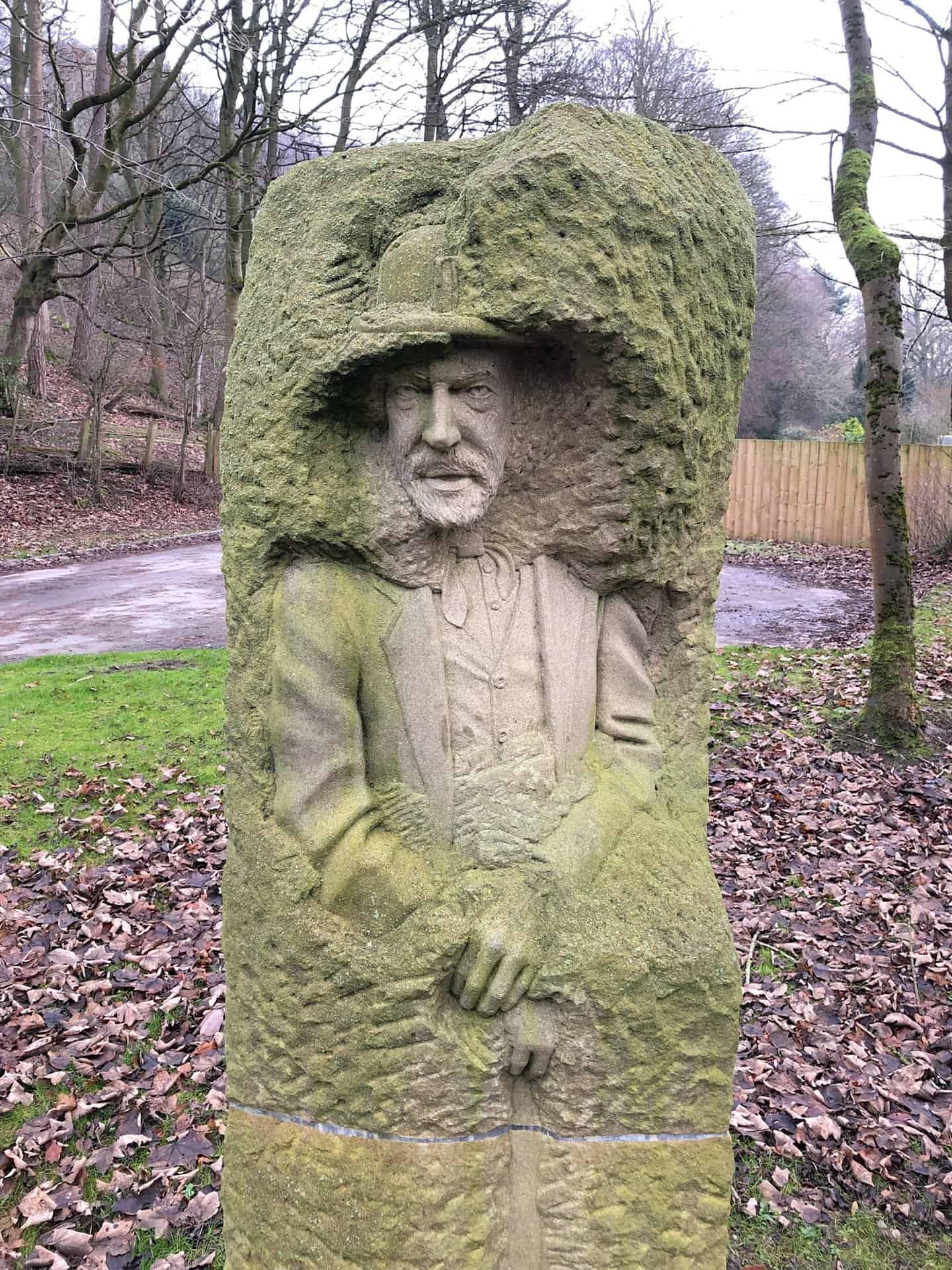
Lead mining dates to Roman times in the dale and had a major impact on the local economy until around the 1890s when lead extraction ceased due to cheap imports. The figure of the lead miner was based on Paul Reinsch who has been helping to restore local mines in Greenhow.
Fountains Abbey and Bylands Abbey shaped Nidderdale, having major land holdings from 1200 until the dissolution of the monasteries. The Archbishop of York once owned the township of Pateley Bridge. The figure of the monk was based on John Hayton, Joseph’s father.
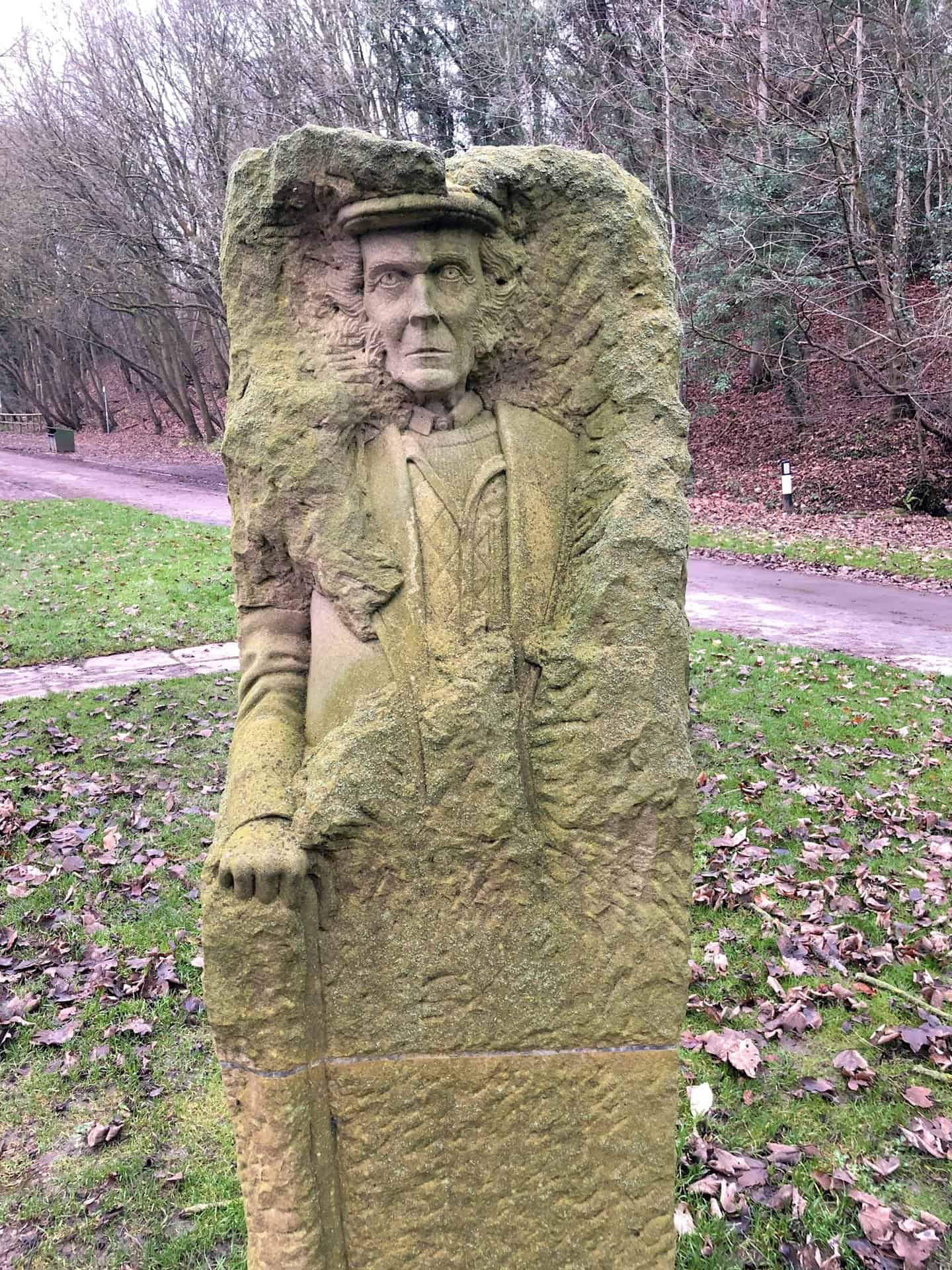
Sheep farming has been crucial to the economy of Nidderdale from medieval times when Fountains Abbey and Bylands Abbey had substantial granges where sheep farming was predominant. Sheep farming still dominates the land today and the shepherd was based on John Rayner, a sheep farmer, whose farm at Gouthwaite was established in the 1200s and is on record for supplying produce to Fountains Abbey. An absolute highlight of this Brimham Rocks walk!
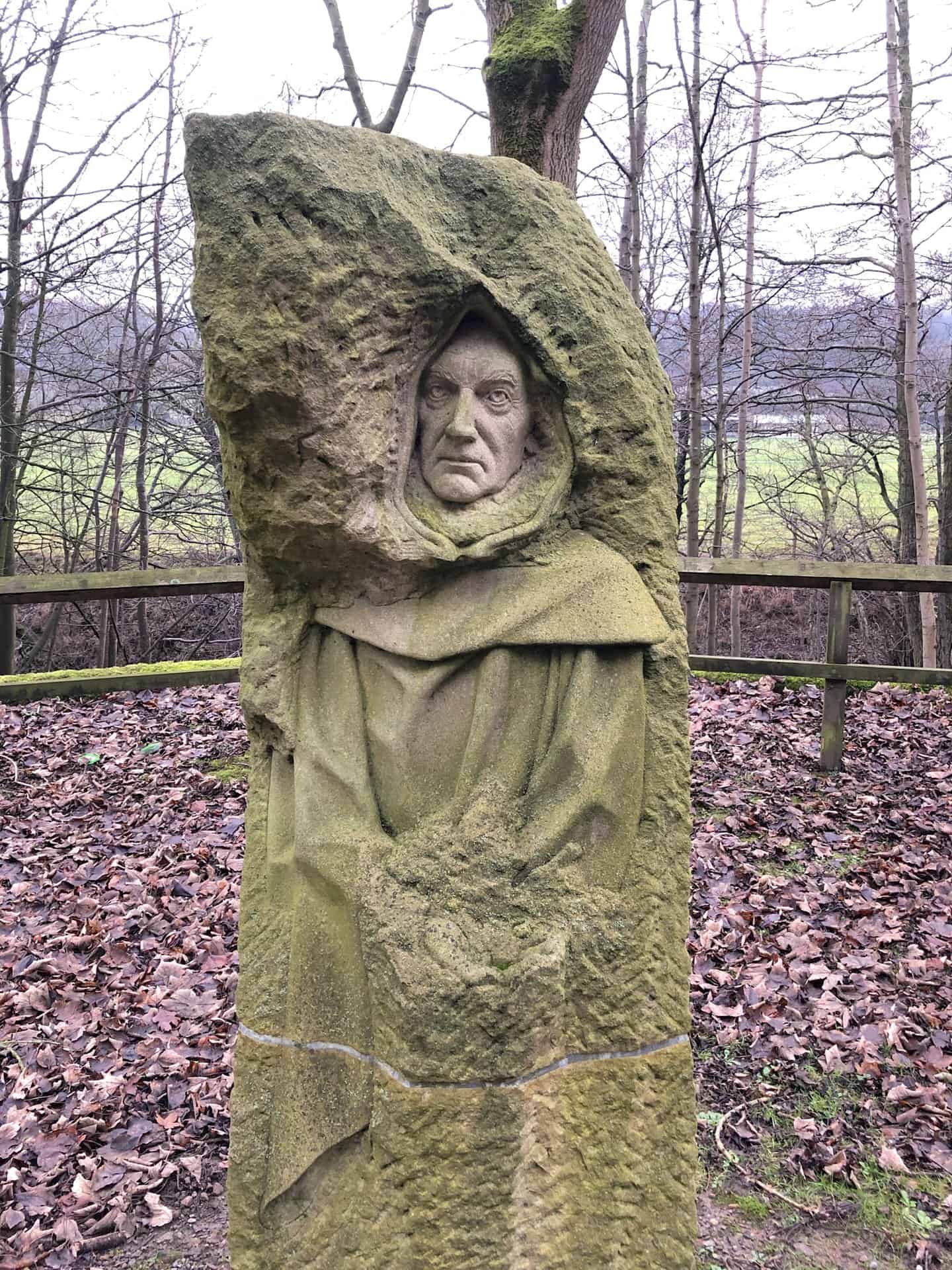
Amazon’s Top Walking Boots: Four Standout Choices for Men and Women
For walking and hiking, the right boots are essential for both comfort and safety. While Amazon boasts a wide range, certain boots emerge as top-sellers. From those, here are four I personally favour. As an Amazon affiliate, I may earn a small commission from any purchases made through the links provided. This helps support the upkeep of this website. Rest assured, you won’t pay a penny extra, but your purchase will contribute to keeping my site running smoothly. Happy walking!

Berghaus Men’s Hillmaster II Gore-Tex Walking Boots
These fully waterproof leather walking boots feature a Gore-Tex lining, ensuring no water enters whilst allowing feet to breathe and stay cool. Made from full-grain leather, they promise unmatched durability and comfort. The boots come with memory foam tongues and cuffs that mould to your feet for a tailored fit, and the Vibram Hillmaster outsoles offer confidence on challenging terrains.

Salewa Men’s Mountain Trainer Mid Gore-Tex Walking Boots
Made from durable suede and abrasion-resistant textile, these men’s hiking boots are both lightweight and sturdy. The upper material is enhanced by a 360° full rubber sheath. Their dual-layer midsole with Bilight technology ensures ergonomic cushioning and grip, especially on extended hikes. The Vibram Wrapping Thread Combi outsoles allow a natural walking feel, and the Gore-Tex lining provides waterproofing, breathability, and optimal weather protection. Furthermore, the patented Salewa 3F system ensures flexibility, a secure heel grip, and a blister-free fit.
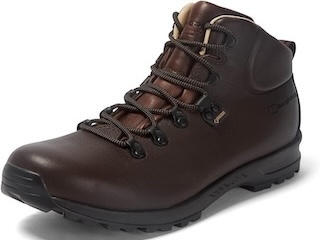
Berghaus Women’s Supalite II Gore-Tex Walking Boots
Specially designed for women, these hiking boots offer waterproofing and breathability, thanks to their Gore-Tex lining. Crafted from full-grain abrasion-resistant leather, they’re durable enough for the toughest hikes. The Supalite soles ensure stability and traction, and the EVA midsoles add comfort for extended walks.

Merrell Women’s Moab 3 Mid Gore-Tex Walking Boots
These hiking boots incorporate a Gore-Tex waterproof membrane, blending breathability with superior waterproof performance. The combination of pigskin leather and mesh on the uppers, along with the suede outer material, ensure durability and style. Enhancements include 100% recycled laces, webbing, and mesh lining. Additionally, bellows tongues, protective toe caps, and Vibram TC5+ rubber soles ensure protection and ease on any terrain.